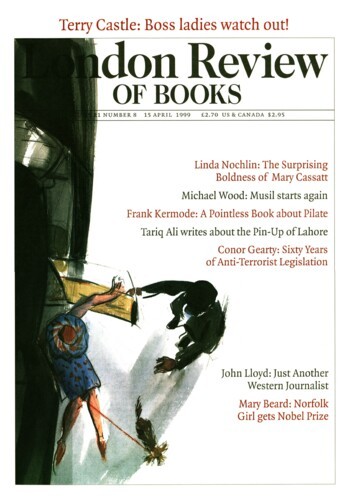Political Purposes: art in postwar Britain
Frances Spalding, 15 April 1999
‘I do not believe it is yet realised what an important thing has happened,’ Maynard Keynes announced in a BBC broadcast soon after the foundation of the Arts Council in 1946. ‘State patronage of the arts has crept in. It has happened in a very English, informal, unostentatious way – half-baked if you like. A semi-independent body is provided with modest funds.’ Modest, too, was the almost passive role which the Arts Council adopted as a conduit between artist and public: a policy, Margaret Garlake remarks, ‘designed less to inspire than to avoid giving offence’. Despite this, the major exhibitions which the Arts Council mounted at the Tate Gallery during the immediate postwar years greatly enlivened its near-moribund exhibition programme and aided London’s gradual takeover from Paris as a centre for the international art market. Simultaneously, an increase in art education and art publishing offered further proof of Britain’s postwar vitality. The Whitechapel Art Gallery became a major venue after Bryan Robertson took over there, and the British Council, founded in 1934, also held important exhibitions, though it operated mostly abroad, becoming, as Garlake observes, an unacknowledged arm of the Foreign Office. Garlake quotes a letter, first brought to light in Frances Donaldson’s history of the British Council, in which a member of the Foreign Office admitted that the Cold War ‘is in essence a battle for men’s minds’ and that ‘the British Council is one of our chief agencies for fighting it.’ From the artist’s point of view, however, to be taken up by the British Council meant a significant increase in reputation. The re-establishment of the Venice Biennale, in 1948, resulted in further opportunities for international acclaim. The Venice and São Paulo biennales, and other international cultural events, had, Garlake argues, ‘immense symbolic significance at a time when governments were desperate to cement the fragile political reconstruction of Europe’.’‘

